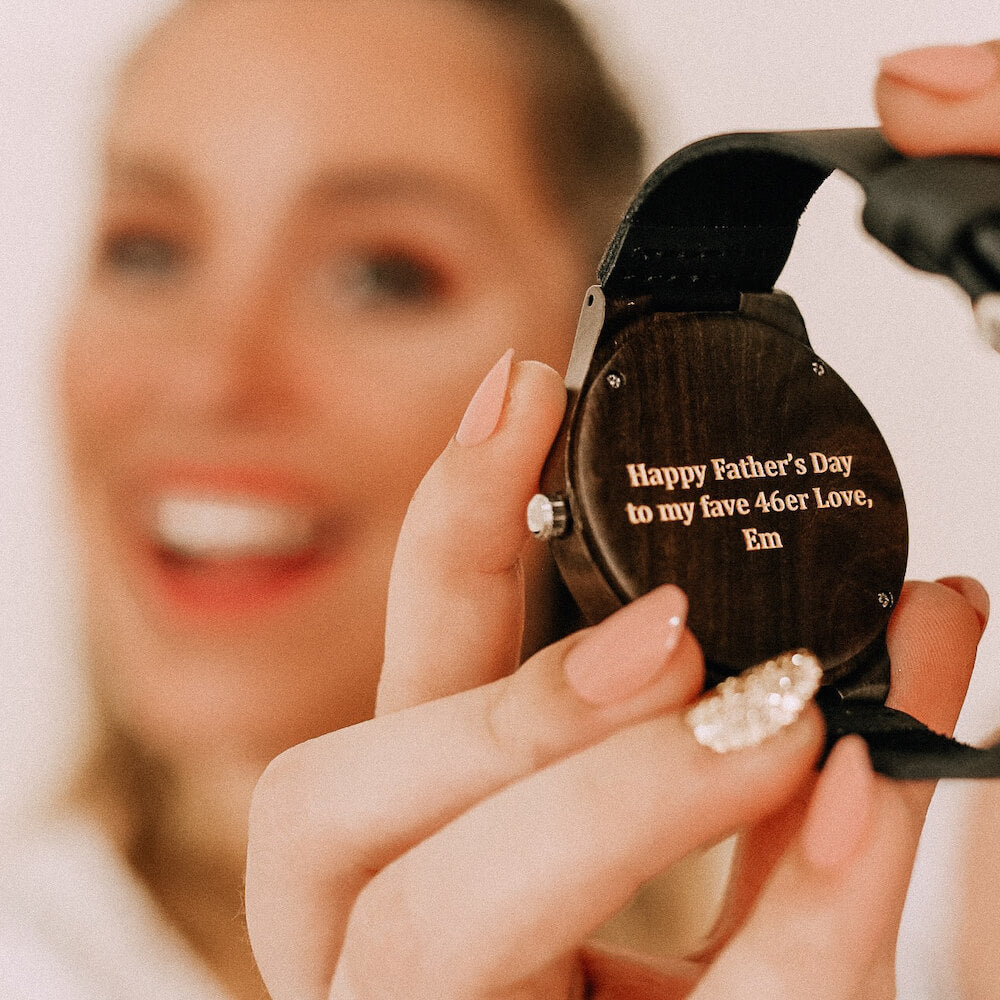Haben Sie sich schon einmal gefragt, was eine Uhr zum Laufen bringt? So wie ein Motor ein Auto antreibt, wird eine Uhr durch ihr Uhrwerk angetrieben. Wenn Sie ein erfahrener Uhrenliebhaber sind, kennen Sie sich wahrscheinlich mit verschiedenen Uhrwerken und ihren Funktionen aus. Wenn Sie sich jedoch erst seit kurzem für Uhren interessieren, finden Sie die technischen Details möglicherweise etwas verwirrend.
Wir haben diesen umfassenden und leicht verständlichen Leitfaden zu Uhrwerken entwickelt, damit Sie entsprechend Ihren Anforderungen auswählen können.
Die drei wichtigsten Uhrwerktypen - erklärt
Stellen Sie sich Folgendes vor: eine winzige, komplexe Welt, die ausschließlich aus Zahnrädern, Federn und Schaltkreisen besteht. Damit wird Ihre Armbanduhr angetrieben, egal ob manuell, automatisch oder mit Quarzwerk. Quarz- und Automatik-Quarzuhren benötigen zwar eine Batterie, sind aber dennoch auf einige mechanische Teile angewiesen, damit die Zeit reibungslos weiterläuft.
Aber hier ist der Clou: Mechanische Uhren sind wahre Kunstwerke. Uhrmacher fertigen sie in Handarbeit mit einer Detailgenauigkeit, die die ihrer batteriebetriebenen Gegenstücke übertrifft. Deshalb sind sie auch viel teurer. Aber für Uhrensammler und -kenner ist sie jeden Cent wert.

Sicher, batteriebetriebene Uhren sind auf dem Papier vielleicht genauer, aber ihnen fehlt die Seele, die eine sorgfältig gefertigte Uhr mit sich bringt. Mit manuellen und automatischen Uhrwerken tragen Sie ein Stück Geschichte an Ihrem Handgelenk, die Kulmination jahrhundertelanger Innovation, Geschicklichkeit und Leidenschaft.
Lassen Sie uns jede Bewegung im Detail untersuchen:
Mechanisches Uhrwerk
Sammler betrachten alte Uhren mit mechanischem Uhrwerk heute aufgrund ihres antiken Charakters als Sammelstücke. Es ist das älteste Uhrwerk und wird oft als Handaufzugswerk bezeichnet, da man die Uhr täglich aufziehen muss, damit sie den ganzen Tag läuft. Es wurde im 16. Jahrhundert erfunden und legte den Grundstein für zukünftige Innovationen.
Teile eines mechanischen Uhrwerks:
Krone
Dies ist das kleine Rad an der Seite des Uhrgehäuses, mit dem die Uhr aufgezogen wird.
Triebfeder
Dabei handelt es sich um das Hauptkraftwerk des Uhrwerks, das die gesamte Energie aus dem immer fester werdenden Aufziehen der Krone speichert.
Getriebe
Dieses besteht aus kleinen Zahnrädern, die die von der Antriebsfeder gesammelte Energie auf die Hemmung übertragen.
Hemmung
Dies dient zur Unterbrechung des Uhrwerks, da die Energie von der Antriebsfeder und den Zahnrädern aufgenommen und in gleiche Teile aufgeteilt wird.
Unruh
Dies ist der Kern des Uhrwerks, da dieses Rad mit der Energie der Hemmung in einer kreisförmigen Bewegung schlägt oder schwingt. Normalerweise schlägt es mit einer Frequenz von fünf bis zehn Mal pro Sekunde, es kann jedoch so eingestellt werden, dass es langsamer oder schneller schlägt.
Wählscheibenzug
Dabei handelt es sich um einen weiteren Satz Zahnräder, der die Energie von der schlagenden Unruh aufnimmt und für die Übertragung auf die Uhrzeiger reguliert.
Juwelen
An Stellen mit hoher Reibung, beispielsweise zwischen den Zahnrädern, werden synthetische Rubine verwendet, um die Lebensdauer des Uhrwerks zu verlängern und die Genauigkeit der Uhr zu verbessern.
Wie funktioniert ein mechanisches Uhrwerk?
- Beim Drehen der Krone spannt sich die Schlagfeder immer stärker und speichert Energie
- Die Energie wird dann über ein Getriebe auf die Hemmung übertragen.
- Die Hemmung teilt die Energie in gleiche Teile auf
- Die Unruh nutzt diese gleichmäßig verteilte Energie, um mit einer gleichmäßigen und konstanten Geschwindigkeit hin und her zu schlagen.
- Diese Energie wird dann in regelmäßigen Abständen auf die Zeiger übertragen und sorgt so für die Vorwärtsbewegung der Zeiger.
Bevor Sie sich für eine Uhr mit Handaufzug entscheiden, sollten Sie bedenken, dass diese viel Pflege erfordert und täglich aufgezogen werden muss.
Quarzwerk
Dies ist der genaueste Uhrwerktyp, der bisher erfunden wurde. Die Uhr wird mit einer Batterie betrieben und muss nicht wie ein mechanisches Uhrwerk aufgezogen werden. Die meisten Uhrmacher verlassen sich beim Antrieb ihrer Uhren auf das Quarzwerk, da es äußerst zuverlässig ist.

Teile eines Quarzwerks
Batterie
Die Batterie ist die Energiequelle dieses Uhrwerks. Sie hält etwa ein bis zwei Jahre und muss sofort ausgetauscht werden, wenn sie leer ist, da sonst die Säure auslaufen und die Uhr dauerhaft beschädigen kann.
Integrierter Schaltkreis
Dieser Schaltkreis leitet den von der Batterie erzeugten Strom oder die Ladung an die anderen Teile der Uhr.
Quarzkristall
Dies ist genau wie die Unruh in einem manuellen oder mechanischen Uhrwerk. Sie vibriert, wenn sie mit elektrischer Ladung versorgt wird. Die Vibrationen erzeugen Spannung.
Schrittmotor
Dieser Motor wandelt dann die Spannung in mechanische Leistung um.
Wählscheibenzug
Dies funktioniert wie das Zifferblatt eines Automatikwerks, das die Energie vom Schrittmotor an die Zeiger überträgt, um sie vorwärts zu bewegen.
Wie funktioniert ein Quarzwerk?
- Der integrierte Schaltkreis leitet die von der Batterie erzeugte elektrische Ladung zum Quarzkristall.
- Der Kristall vibriert konstant mit 32.768 pro Sekunde
- Der integrierte Schaltkreis gibt diese Impulse dann an den Schrittmotor weiter.
- Der Schrittmotor sendet jeden 32.768. Impuls an das Wählwerk.
- Das Zifferblatt überträgt diese Energie dann auf die Zeiger und sorgt so für eine Vorwärtsbewegung dieser.
Automatisches Uhrwerk
Im 20. Jahrhundert kam es zu einer Innovation gegenüber dem manuellen Uhrwerk: dem automatischen Uhrwerk. Es ist selbstaufziehend und mechanisch, muss aber aufgezogen werden, wenn es längere Zeit nicht getragen wird.

Teile eines Automatikuhrwerks
Da das automatische Uhrwerk auf den Grundprinzipien des mechanischen/manuellen Uhrwerks basiert, funktionieren alle Komponenten nach dem gleichen Prinzip. Es gibt nur eine zusätzliche Komponente, nämlich den Rotor, der den automatischen Aufzug der Uhr ermöglicht.
Rotor
Der Rotor, der mit dem Innenleben der Uhr verbunden ist, schwingt hin und her, wenn Sie Ihr Handgelenk bewegen. Während er sich dreht, zieht der Rotor die Antriebsfeder über ein Getriebe auf und versorgt Ihre Uhr mit der Energie, die sie zum Weiterlaufen braucht.
Doch hier ist ein cleverer kleiner Mechanismus am Werk: Der Rotor verfügt über eine Kupplung, die ihn vom Aufziehen abkoppelt, wenn die Antriebsfeder vollständig aufgezogen ist. Mit anderen Worten: Sobald Ihre Uhr vollständig aufgeladen ist, legt der Rotor eine Pause ein, um ein Überdrehen zu verhindern und einen reibungslosen Betrieb aufrechtzuerhalten.
Uhrwerktypen von Treehut
Wir hoffen, dass Ihnen der Uhrenkauf etwas leichter fällt, wenn Sie die verschiedenen Uhrwerke verstehen und unterscheiden. Hier bei Treehut können Sie aus einer Reihe japanischer Quarz- und Automatikuhren wählen, die aus hochwertigen Materialien und mit hochwertigen Uhrwerken hergestellt sind.























